Idrw Team
SOURCE: IDRW.ORG TEAM
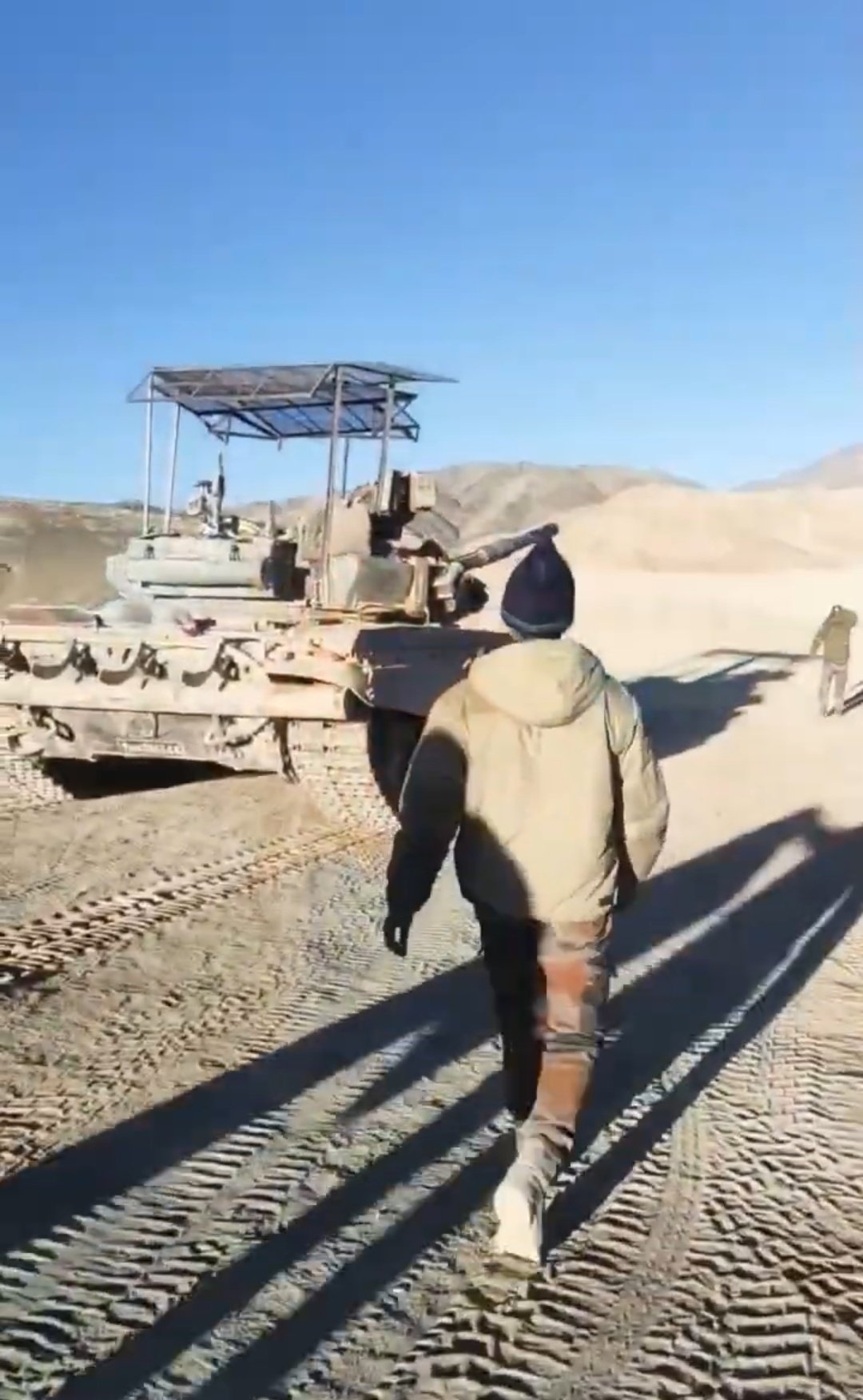
A distinctive feature of Russian military vehicles, the overhead metal screens known as ‘cope cages,’ has now made its appearance on Indian Army’s T-72 Main Battle Tanks (MBTs) deployed in forward areas near the Line of Actual Control (LAC), particularly close to the Chinese-occupied Aksai Chin region. These improvised additions, initially seen on Russian armor just before their extensive invasion of Ukraine in late 2021, have become a significant addition to armored vehicles and are something Russia is eager to market to foreign clients closely monitoring developments in the Ukraine conflict.
The ‘cope cages’ serve as a response to the evolving threats that armored vehicles face on modern battlefields, where unconventional tactics and weaponry have gained prominence. As the conflict in Ukraine persists, these solutions continue to evolve and adapt. Furthermore, the rapid proliferation of loitering munitions, commercially available bomblet-dropping drones, and first-person video kamikaze drones has driven military forces across the globe to find ways to counter these threats effectively.
Continue readingSOURCE: IDRW.ORG TEAM
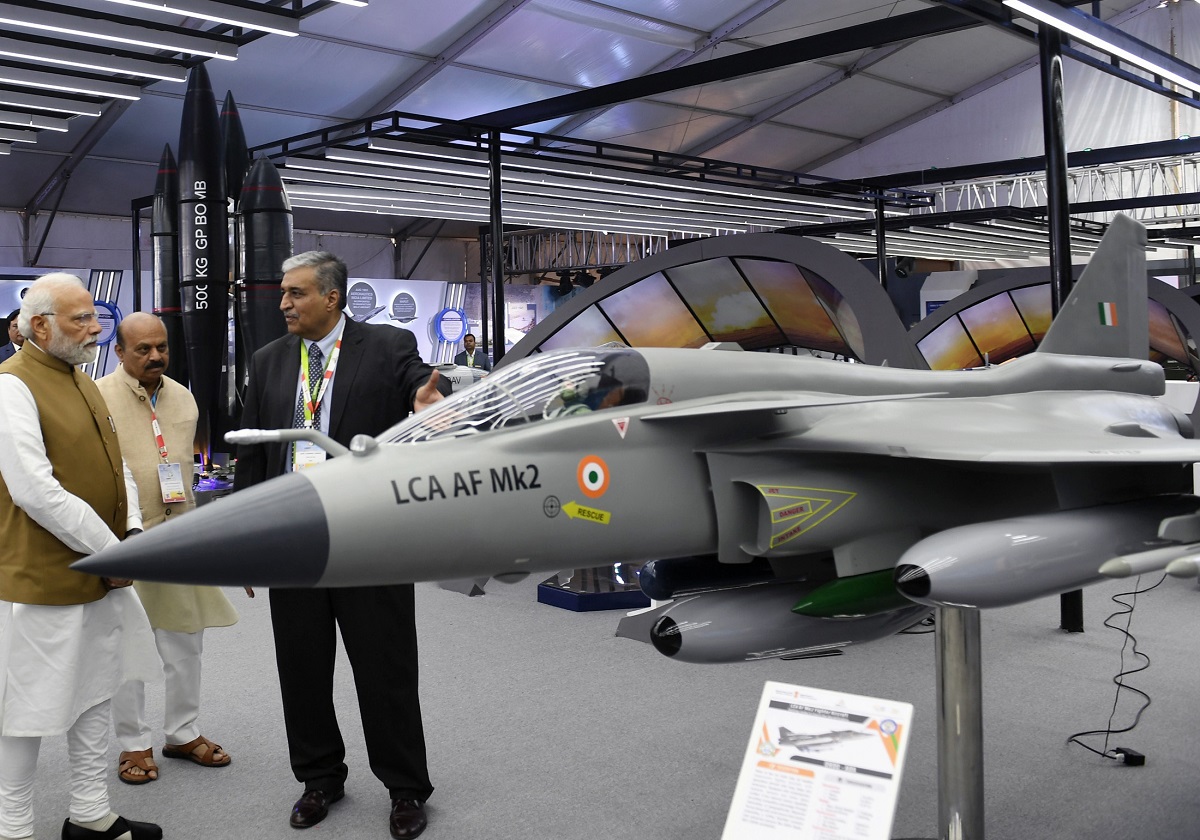
Hindustan Aeronautics Limited (HAL) has set a target to commence production of the Tejas Mk-2 fighter jet in five years. The confirmation comes from HAL’s Chief, CB Ananthakrishnan, who revealed that the Aeronautical Development Agency (ADA) and HAL are collaborating to roll out pre-production Tejas Mk-2 aircraft by the end of 2024. The first flight of this advanced fighter is planned for 2025.
India has allocated ?10,000 crore for the Tejas Mk-2 program, and the Indian Air Force (IAF) has committed to acquiring 120 of these jets. The objective is to replace the aging fleet of Mig-29UPG and Jaguar Darin-III Strike aircraft, with the process expected to begin in 2030-34. Additionally, the IAF plans to phase out 50 Mirage-2000H fighter jets from its fleet starting in 2035, gradually integrating the Tejas Mk-2.
Continue readingSOURCE: IDRW.ORG TEAM
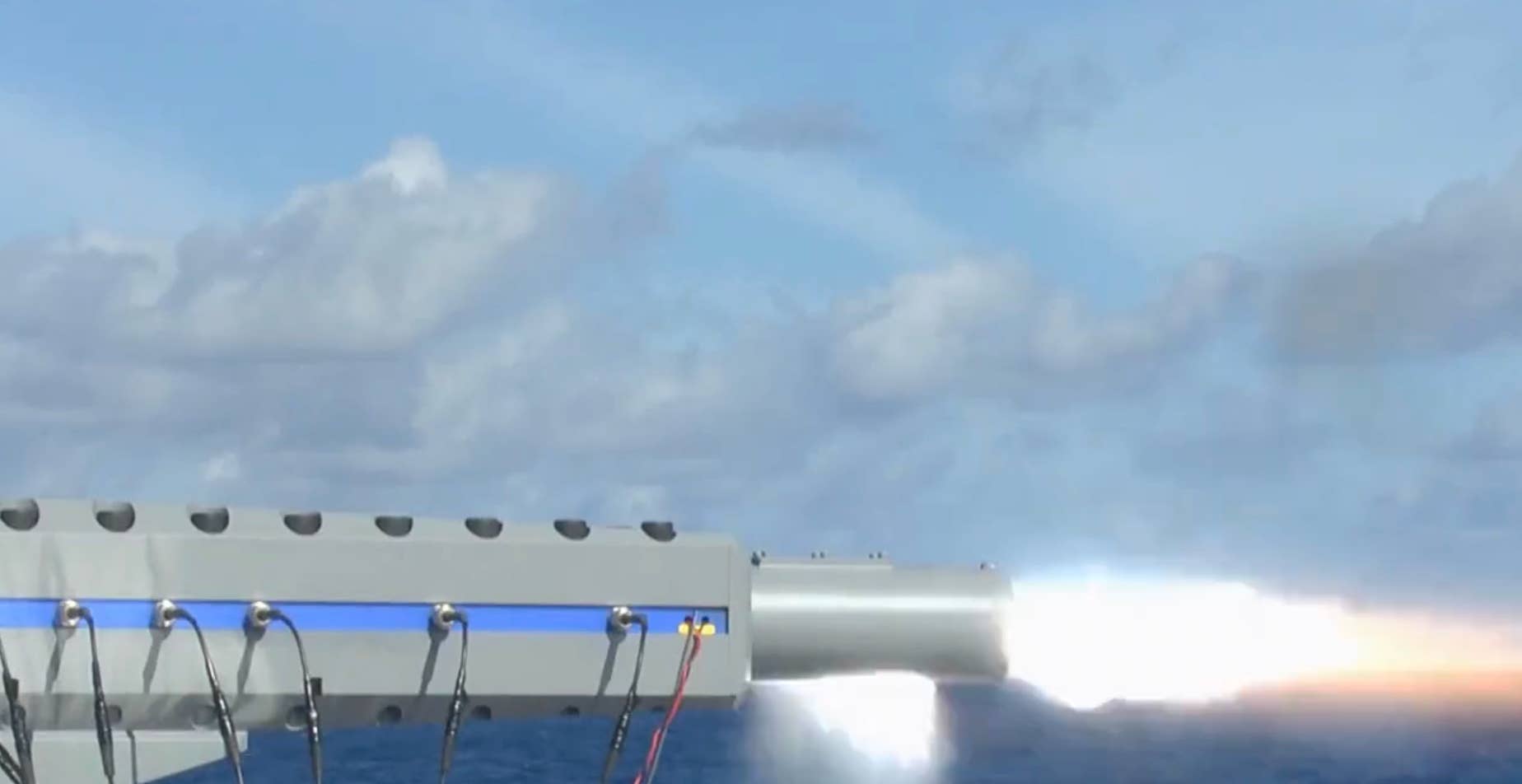
Japan has announced a successful test of its medium-caliber maritime electromagnetic railgun, making it the first country to achieve this feat. The test was conducted via an offshore platform in collaboration with Japan’s Acquisition Technology & Logistics Agency (ATLA) and the Japanese Maritime Self-Defense Force (JMSDF).
While specific details about the test’s circumstances and timing are limited, video footage released by ATLA showcases the railgun firing projectiles from various angles. The successful test marks a significant advancement in railgun technology, positioning Japan to use it both at sea and on land.
Continue readingSOURCE: IDRW.ORG TEAM

Hindustan Aeronautics Limited (HAL), India’s premier aerospace company, is set to make a significant leap in its defense capabilities. In a recent interview with Hindustan Times, HAL Chief CB Ananthakrishnan unveiled an ambitious plan to export Made in India F-414 engines to other nations. This plan hinges on the company’s local production of these engines, and its pursuit of a significant Transfer of Technology (ToT) from American GE Engines.
The cornerstone of HAL’s export plan is the indigenous production of F-414 engines. To achieve this goal, HAL is actively negotiating a deal with American GE Engines for 99 engines that will be manufactured in India. The ToT agreement is expected to provide HAL with an 80 percent technology transfer, enabling them to locally produce these cutting-edge engines.
Continue readingSOURCE: IDRW.ORG TEAM
The Defence Research and Development Organisation (DRDO) is making significant strides in the field of hypersonic technology with its latest project, Dhvani. Project Dhvani aims to develop a Hypersonic Glide Vehicle based on the wave-rider configuration, a cutting-edge concept in hypersonic technology.
The wave-rider configuration, which serves as the foundation for Project Dhvani, is a promising design for achieving hypersonic speeds efficiently. Wave-rider vehicles are designed to ride on their own shockwaves, minimizing drag and enhancing their aerodynamic performance in the hypersonic regime.
Continue readingSOURCE: IDRW.ORG TEAM

Hindustan Aeronautics Limited (HAL), in collaboration with the Indian Air Force (IAF), is committed to an accelerated schedule for the delivery of the Tejas Mk1A fighter jets. The company initially aimed to deliver the first two Tejas Mk1A aircraft to the IAF by February 2024. Now, HAL has set its sights on completing the delivery of all 83 Tejas Mk1A fighter jets ordered by the IAF in 2021 by the end of 2028, well ahead of the stipulated 2029 timeline outlined in the contract.
HAL’s ambitious timeline reflects its dedication to bolstering the IAF’s capabilities and ensuring that the Tejas Mk1A project proceeds swiftly. The production capacity at HAL’s facility in Bengaluru allows for the construction of 16 LCA Mk-1A aircraft annually. However, the addition of the Nashik production line will significantly enhance the firm’s production capabilities, enabling the completion of a total of 24 jets each year.
Continue readingSOURCE: IDRW.ORG TEAM

he global defense industry is abuzz with anticipation as Seoul ADEX 2023, a premier international aerospace and defense exhibition, gears up to showcase the latest advancements in defense technology and equipment. Among the esteemed participants, ARMOURED VEHICLES NIGAM LIMITED (AVNL), a leading player in India’s public defense sector, is poised to make a significant impression with its range of cutting-edge products.
Scheduled to take place from October 17th to October 22nd, 2023, Seoul ADEX is a highly anticipated event that brings together top defense manufacturers, industry experts, and defense officials from around the world. More than 450 senior defense officials from a staggering 54 countries are expected to attend, joined by an extensive gathering of defense professionals and the general public.
Continue readingSOURCE: IDRW.ORG TEAM
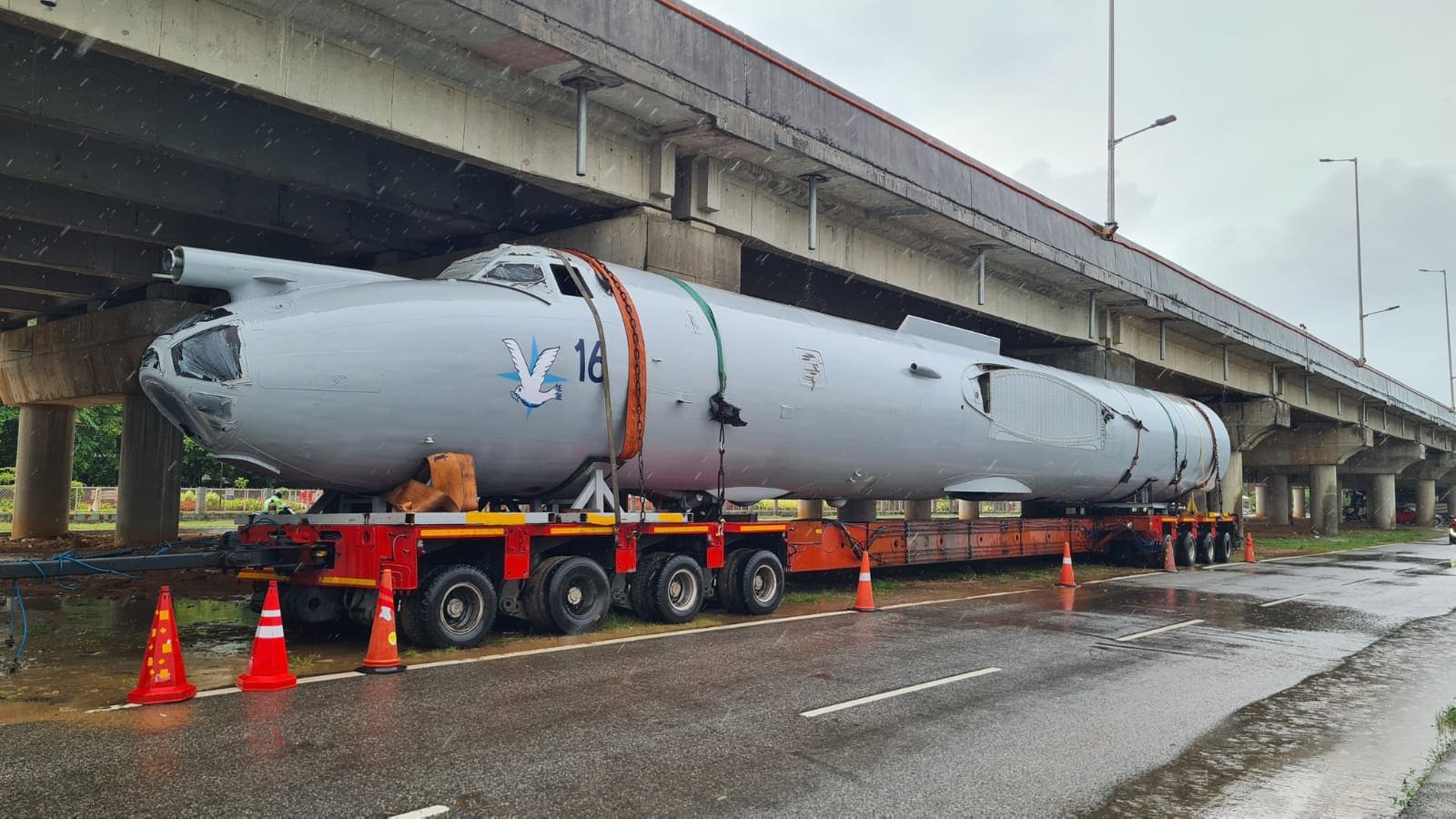
Karnataka Tourism is all set to enhance the charm of Karwar Beach, located in the Uttara Kannada district, with a unique addition – the retired Tupolev Tu-142 Museum. Karwar Beach, known for its expansive coastline and scenic beauty, is poised to become an even more captivating destination with the arrival of this intriguing exhibit.
The decision to establish the Tupolev Tu-142 Museum on Karwar Beach comes as a delightful surprise for tourists and history enthusiasts. The Tupolev Tu-142 maritime aircraft, once an integral part of the Indian Navy’s fleet, was retired from active service and recently relocated from its previous station at INS Hansa in Goa to its new home in Karwar.
Continue readingSOURCE: IDRW.ORG TEAM
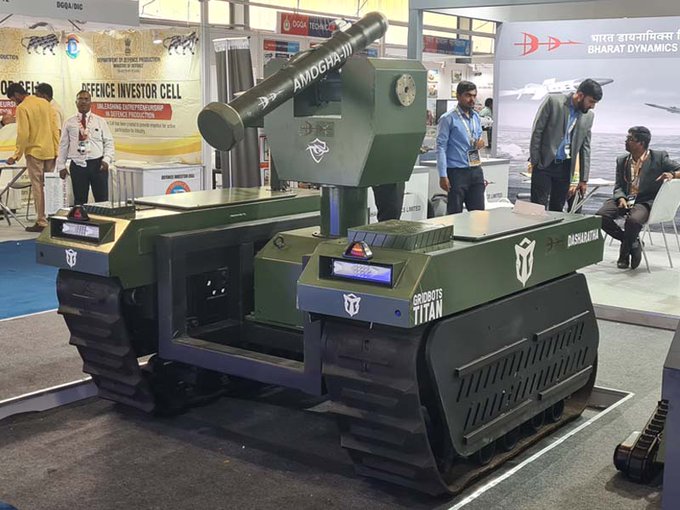
In a remarkable display of technological prowess, Gridbots Technologies Private Limited from India is set to showcase its formidable creation, the TITAN Autonomous Tank Killer. This 2000-kilogram behemoth is designed to autonomously track and eliminate enemy tanks swiftly and effectively, making it a powerful addition to the nation’s defense capabilities.
Gridbots TITAN is ready to make its debut in a Tri-Service exercise, bringing together the Indian Army, Navy, and Air Force. The event will take place at a classified location, highlighting the innovative strides made by Gridbots Technologies in the realm of defense technology.
Continue readingSOURCE: IDRW.ORG TEAM
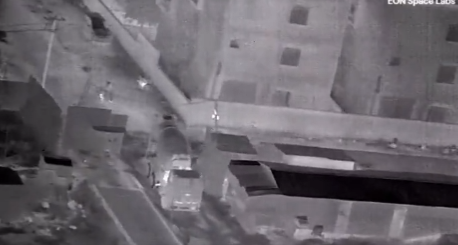
Hyderabad-based startup called Eon Space Labs is making waves in the realm of space-defence technology. With a strong focus on innovation, this company is dedicated to developing earth observation Optical Payloads designed for use in satellites, UAVs, and drones. Their latest creation, a Made in India EO-IR (Electro-Optical Infrared) Payload, is setting new standards in remote sensing technology and surveillance.
One of the standout features of this EO-IR Payload is its ability to detect humans from a staggering distance of 1.5 kilometers using drones. This level of precision and range is a game-changer in the field of surveillance and remote sensing. Even more impressive is the fact that these results were achieved at a 78-degree angle from nadir, showcasing the remarkable capabilities of Eon Space Labs’ technology.
Continue readingSOURCE: IDRW.ORG TEAM

Taiwan marked a significant milestone in its defense strategy by unveiling a prototype of its first domestically assembled submarine. Named “Hai Kun,” the diesel-electric vessel is part of Taiwan’s ambitious program to enhance its naval capabilities, driven by concerns over the looming threat of a potential invasion by China. This achievement has been made possible through discreet assistance from various foreign experts and engineers.
The Taiwanese Defense Ministry recently conducted the maiden sea trial of the submarine at the shipbuilder CSBC Corp.’s Kaohsiung dockyard. This event underscores Taiwan’s determination to bolster its naval defenses in the face of mounting tensions with China.
Continue readingSOURCE: IDRW.ORG TEAM

India’s quest to modernize its air force with the acquisition of 114 fighter jets under the Multi-Role Fighter Aircraft (MRFA) tender has encountered a series of challenges and debates within the military and government. With a potential deal worth over $20 billion at stake, the Indian Air Force (IAF) is faced with the task of selecting the most effective and efficient procurement strategy.
The IAF has long recognized the need to bolster its fleet with modern fighter aircraft. Under the MRFA tender, the force is seeking to procure 114 jets, a process that might span the next three years. The request for proposal (RFP) is expected to be issued in the near future, but the IAF’s decision-making process is far from straightforward and first aircraft to be inducted by happen only in 2030 if alternatives procurement plans are not explored.
Continue readingSOURCE: IDRW.ORG TEAM

In a scene reminiscent of intrigue and security concerns, the US WC-135R “nuclear sniffer” aircraft, officially designated WC-135R Constant Phoenix, has once again made its presence felt along the Indian and Pakistani coasts. This unique aircraft, renowned for its specialized role in detecting signs of nuclear explosions in the atmosphere, has recently been conducting missions in the region, raising questions about its objectives and the geopolitical dynamics at play.
The recent sightings of the WC-135R along the Indian and Pakistani coasts have piqued the curiosity of many observers. Just Four days after idrw.org has reported the aircraft was first seen in the area, it has returned, this time appearing to focus on the area off Karachi, Pakistan.
Continue readingSOURCE: IDRW.ORG TEAM
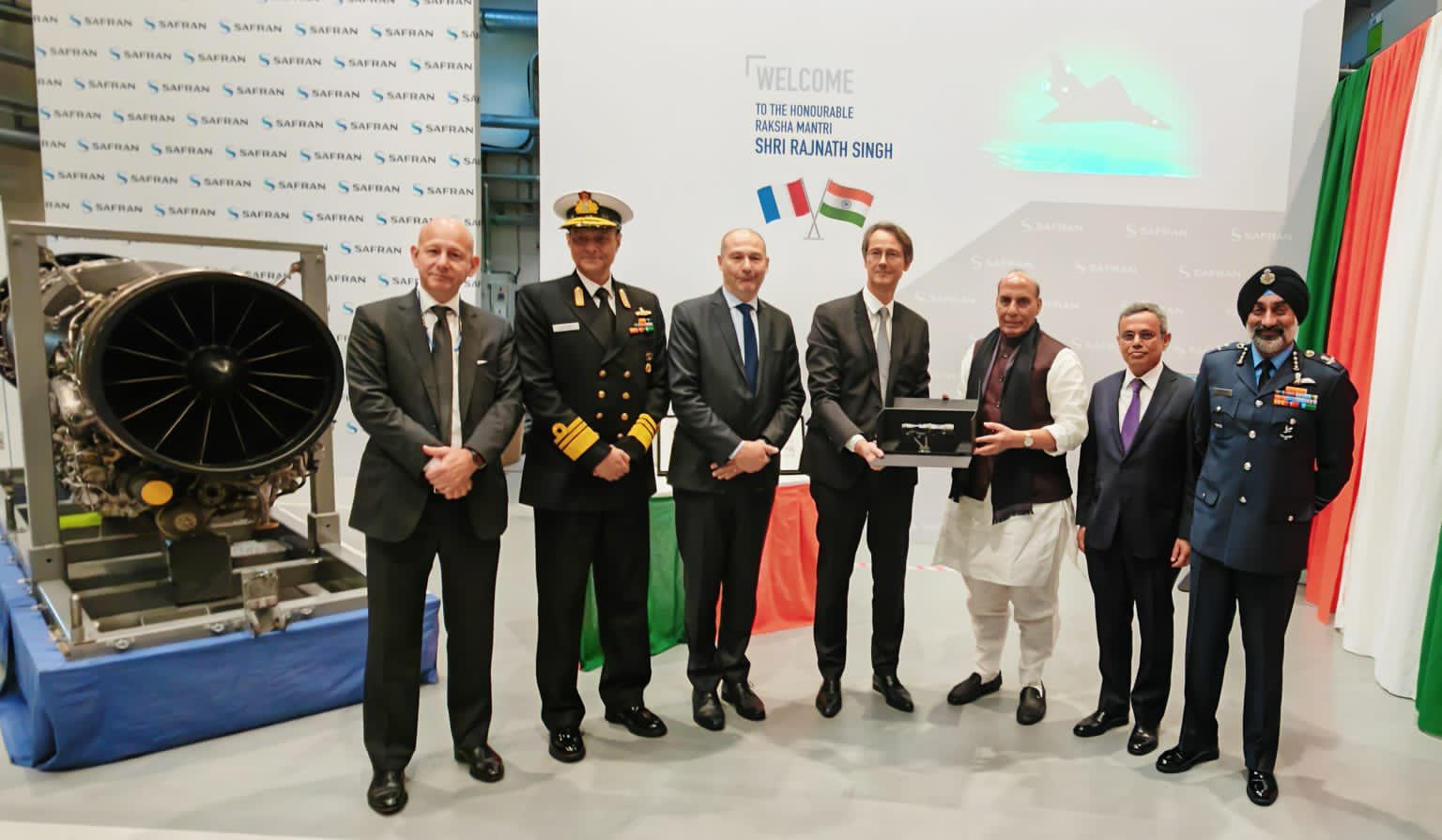
French aerospace giant Safran Aircraft Engines, a key player in the global aviation industry, welcomed Indian Defense Minister Rajnath Singh to its Gennevilliers facility, where pivotal components of the M88 engine, which powers the Dassault Rafale, are manufactured. During the visit, Safran reiterated its commitment to partnering with India on the development of a cutting-edge fighter engine for India’s 5th generation Advanced Medium Combat Aircraft (AMCA) program, which is also designed to be 6th generation-ready.
Safran and India’s Defense Research and Development Organization’s Gas Turbine Research Establishment (DRDO’s GTRE) have entered into discussions with Indian defense industry partners to co-develop new engines tailored to the requirements of the AMCA program. Notably, this new engine will not be an extension of the M88 engine currently in use. Instead, Safran has proposed the development of an entirely new engine core, which can subsequently be upgraded to meet evolving thrust needs. The 110kN engine, at its core, can be enhanced to provide up to 130kN of thrust, which might be sought for India’s envisioned 6th generation fighter jet, expected to materialize after 2030.
Continue readingSOURCE: IDRW.ORG TEAM
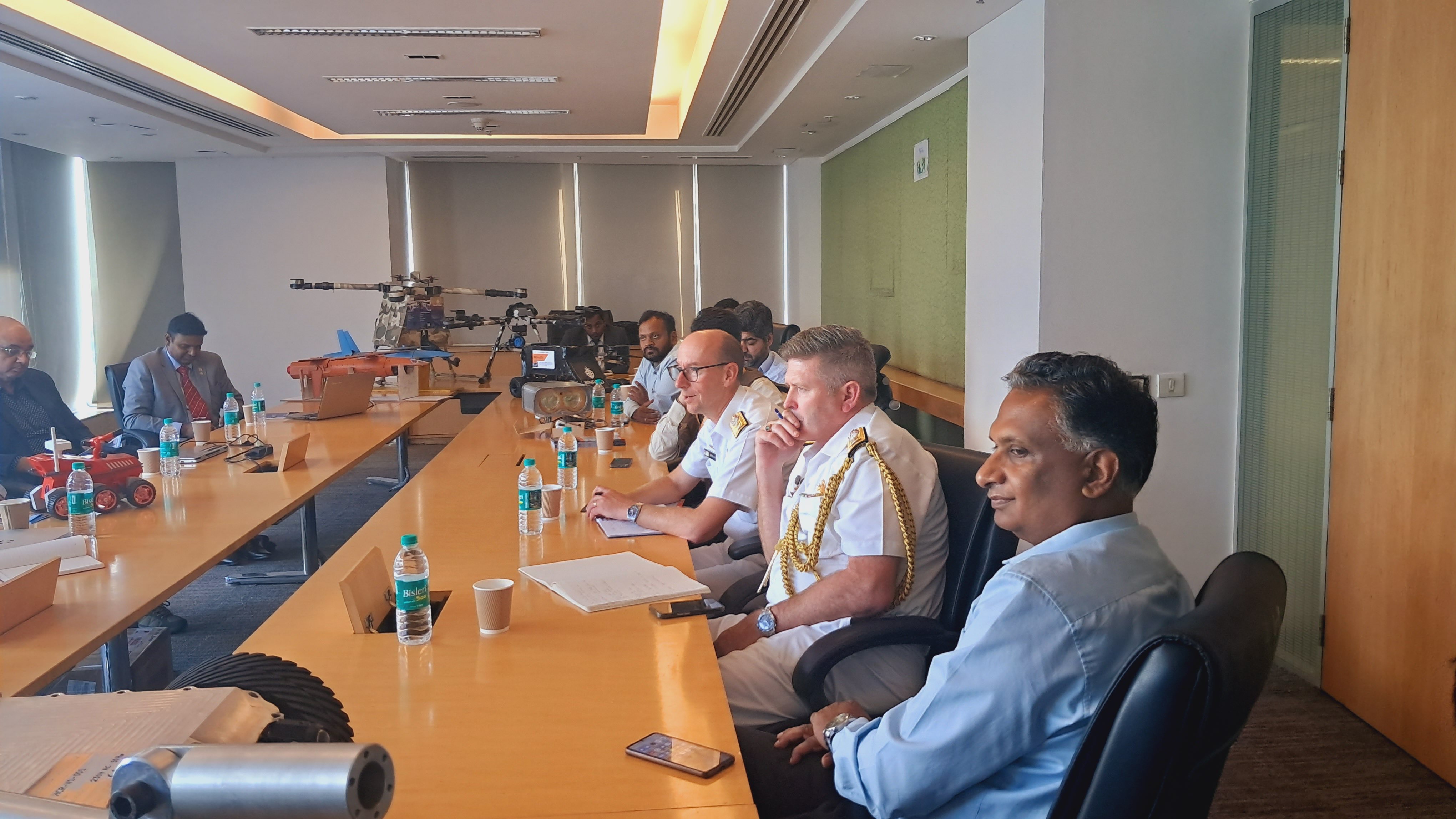
The Innovation for Defence Excellence (iDEX) initiative recently had the honor of hosting a delegation from Australia, led by Director General – Warfare Innovation (DG-WIN) Australia, Mr. Kavanagh D. John. The discussions held during this visit focused on the iDEX framework, potential defense industrial collaborations, and interactions with iDEX innovation winners.
The meeting provided a valuable opportunity to explore avenues of cooperation and knowledge sharing between India and Australia in the field of defense technology and innovation. iDEX, known for fostering innovation and collaboration in the defense sector, was keen to engage with the Australian delegation in discussions related to defense capabilities and advancements.
Continue reading